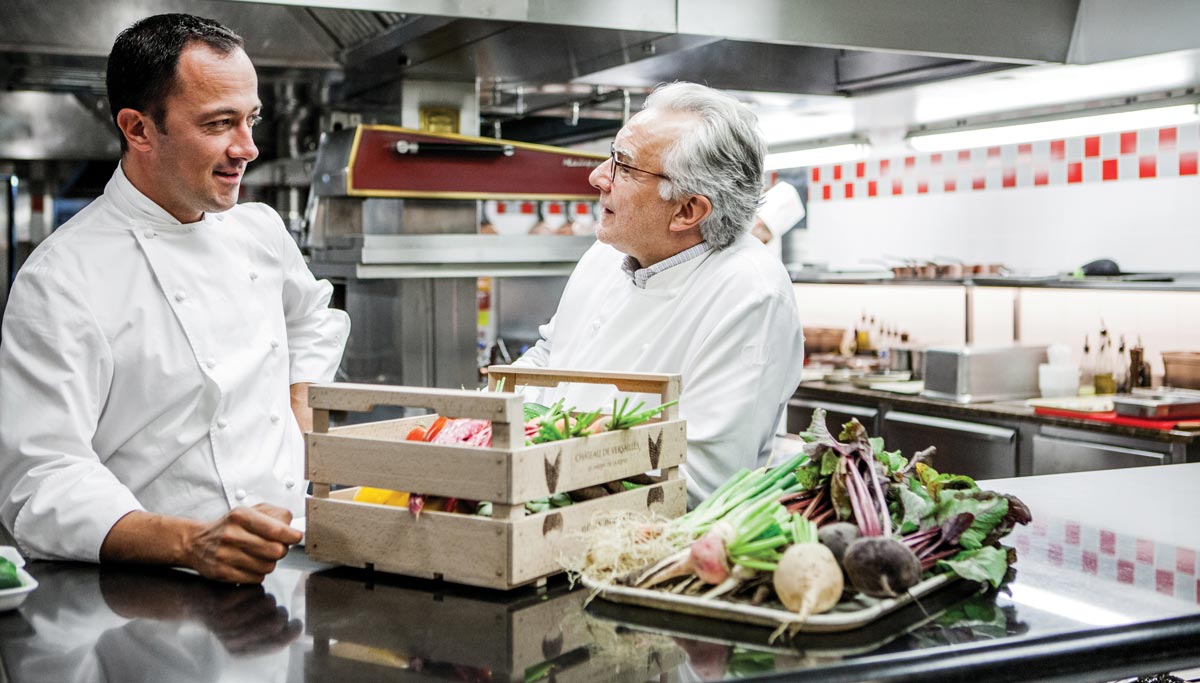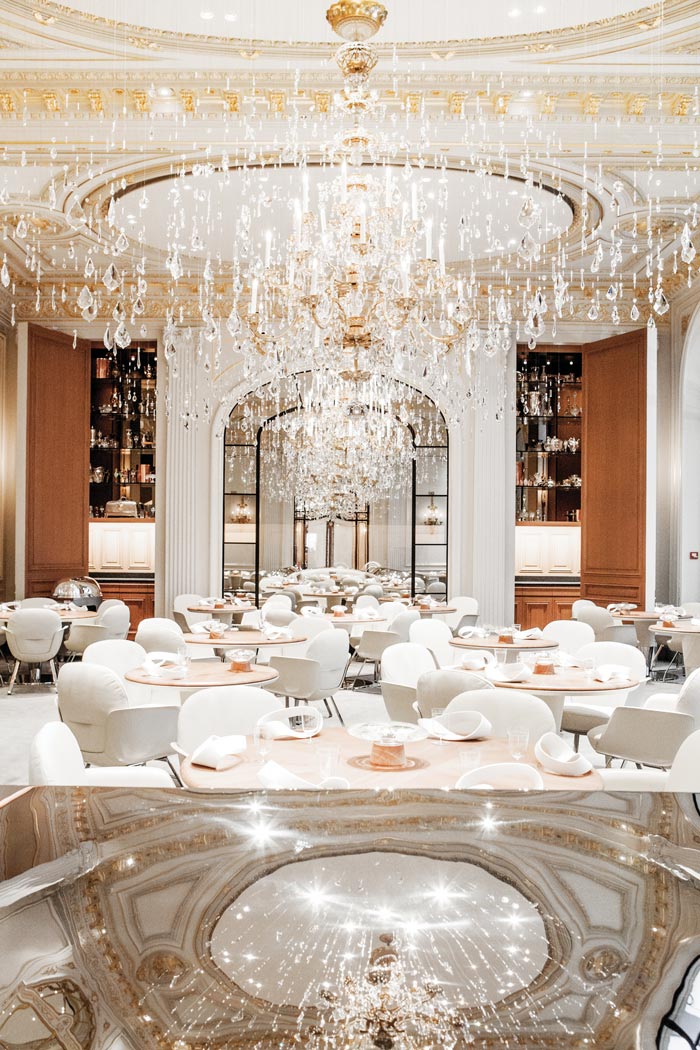“We need to reconnect with nature,” declares legendary French chef and restaurateur Alain Ducasse. “Consumers — and citizens as well — throughout the world have to understand that the resources of the planet are not endless. For us cooks, we must put nature at the center of our cuisine.”
With this virtuous heart, Ducasse is not afraid to take culinary risks. Back in 2014 he introduced a menu at Plaza Athénée Hotel in Paris. To start, he removed the French staples of meat, cheese and bread, calling it “Cuisine de la Naturalité” — Cuisine of Naturalness.
“I’m detail-obsessed,” says Ducasse. With “Cuisine de la Naturalité,” his intent was “to make dishes that are evident, just right in their seasoning, their temperature — the harmony between content and container.”
Today he sees himself, and chefs in general as liaisons between nature and humanity. He refers to himself as a humanist chef. He believes in responsible cuisine that preserves natural resources.
“This cuisine is better for the planet and our health,” he notes. “The pleasure is what you came to savour, what you came to eat, what you came to drink, on a simple wooden table, for delicious moments.”
Becoming Alain Ducasse
Considered the chef of chefs, Ducasse is the holder of 21 Michelin stars and was very the first restaurateur to own three restaurants that each have the top rating of three Michelin stars. Though his dishes beguile foodies from Paris to Saint-Tropez, and Monte-Carlo to Hong Kong, his journey began far from city lights.
“Becoming a chef was a very early call. I was born on a farm in the southwest of France. My grandmother used to cook for the family. I can still remember the taste and flavor of the roast chicken she prepared for Sunday lunches.” To help her, Ducasse would pick ripe vegetables in the kitchen garden, cultivating a mindset and skill that would pay off later. “This experience taught me a very important lesson: before cooking, there is nature.”
Ducasse explains; “The role of the cook is to choose the best possible produce, to prepare it with a lot of respect and bring their authentic tastes to the plate.” He believes that each plate tells a story that is anchored in its terroir or region.
While Ducasse was born with creativity you can’t teach, master chefs like Roger Verge and Alain Chapel helped him shape his craft. Chapel always reminded him, “cooking is much more than recipes.” Years later, he realizes, “this is very true: cooking conjures up an entire vision of life.” And nothing could be truer with the art of fine French cuisine.

A master chef must master many techniques; boiling, steaming, roasting, sautéing, simmering and braising, often blending these methods within the same recipe. “The techniques give French cuisine its complexity yet also its subtlety,” says Ducasse.
As Ducasse mastered his art, he received his first two Michelin stars. But with these initial tastes of success came something unexpected and more grueling than few can ever understand.
Resurrection and redirection
In 1984, a 27-year-old Ducasse was flying over the Alps with his staff when the jet he was in crashed into a mountain. Thrown from the plane, Ducasse laid wide awake in the snow until a rescue team arrived six hours later. No one else survived.
It took 15 operations on his back, legs and eyes, plus another three years of effort before he could walk again unaided. But while sentenced to his bed, he conjured up new recipes and menus.
“During my convalescence, I deeply reflected about how to keep cooking without needing to be present in the kitchen,” says Ducasse. “This helped me reconsider my trade.”

Haute cuisine by Alain Ducasse
Today, Ducasse’s vision is global, and each of his over 30 delectable restaurants are a “genuine creation,” he declares. “I don’t duplicate.”
Ducasse’s obsessive creativity extends past the kitchen, as he perfects elements such as lighting and decor. “I feel like an art director, as I devote as much time creating the ambiance of the venue as I do the menu. And I spend as much energy making sure the restaurants evolve as I do launch them.”
Much of his success comes from attention to the details of the customers’ lifestyle. “I love to deal with cultural differences! Most of them relate to local eating habits. For instance, Americans tend to expect larger portions. Asians prefer fish cooked for a shorter time. However, the pleasure of eating remains universal.”
Cooking up an award-winning menu is as exciting for Ducasse as it time-consuming. It can take up to 18 months, during which time he sources ingredients to ensure they are local and fresh. He strives to elevate his patrons’ lives paying special attention to intangible qualities like “the spirit of the venue, the way people live, what they like, and the vibrations of the urban neighborhood.”
Chef Ducasse’s philosophy incapsulates what might be considered his legacy. “Glocal: a local execution of a global concept. The components vary according to the place and season, yet the structure of the dish remains unchanged.” Intimately personal yet universal, innovative yet traditional, he guides us back to nature. Clearly Ducasse’s uncommon talent is the gift of a guru.
